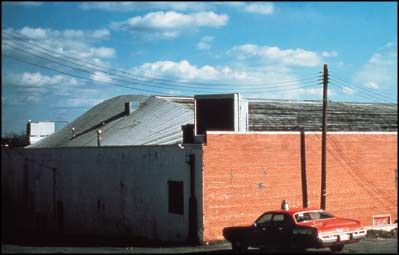Establish & enforce collapse zones where wall-collapse potential exists
This is a brick bearing-wall building. The roof is a heavy wood bowstring truss or, as some call it, an arched truss. The truss delivers its load vertically to the wall, and its collapse could bring down the wall, particularly where the roof slopes at the rear. In an FDNY truss collapse about 10 years ago, sloping rafters pushed down the back wall, causing a number of injuries.
 PHOTO FRANCIS L. BRANNIGAN |
Accompany a defensive attack on such a building with a collapse zone policed by a collapse-sector officer. Nonfirefighters, such as a building inspector, etc., sometimes feel they have a duty to get to the building regardless of the IC’s collapse zone. Police assistance may be necessary to support the IC’s authority over the entire fire scene. Never accept, “I’ll take responsibility if anything happens.” The IC has a duty to enforce his or her command by police action if necessary.
Francis (Frank) L. Brannigan, a fireground commander in the 1940s and a fellow of the Society of Fire Protection Engineers, was named one of the 20 most influential people in the fire service by Fire Chief Magazine. For 37 years, Brannigan has defined building hazards for firefighters. His book, “Building Construction for the Fire Service, Third Edition,” is available from the NFPA.

